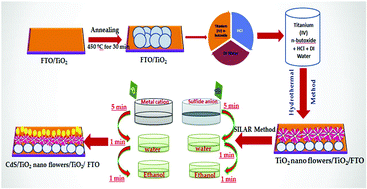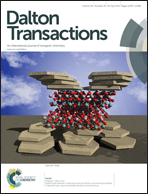The effect of TiO2 nanoflowers as a compact layer for CdS quantum-dot sensitized solar cells with improved performance†
Abstract
Currently, TiO2 on a fluorine-doped tin oxide substrate is the most commonly used type of photoelectrode in high-efficiency quantum dot-sensitized solar cells (QDSSCs). The power conversion efficiency (PCE) of TiO2 photoelectrodes is limited because of higher charge recombination and lower QD loading on the TiO2 film. This article describes the effect of a TiO2 compact layer on a TiO2 film to enhance the performance of QDSSCs. TiO2 nanoparticles were coated on an FTO substrate by the doctor-blade method and then the TiO2 compact layer was successfully fabricated on the surface of the nanoparticles by a simple hydrothermal method. QDSSCs were made using these films as photoelectrodes with NiS counter electrodes. Under one sun illumination (AM 1.5 G, 100 mW cm−2), the QDSSCs showed PCEs of 2.19 and 2.93% for TCL1 and TCL2 based photoelectrodes, which are higher than the 1.33% value obtained with bare TiO2. The compact-layer-coated film electrodes provide a lower charge-transfer resistance and higher light harvesting. The compact layer on the TiO2 film is a more efficient photocatalyst than pure TiO2 film and physically separates the injected electrons in the TiO2 from the positively charged CdS QD/electrolyte.


 Please wait while we load your content...
Please wait while we load your content...